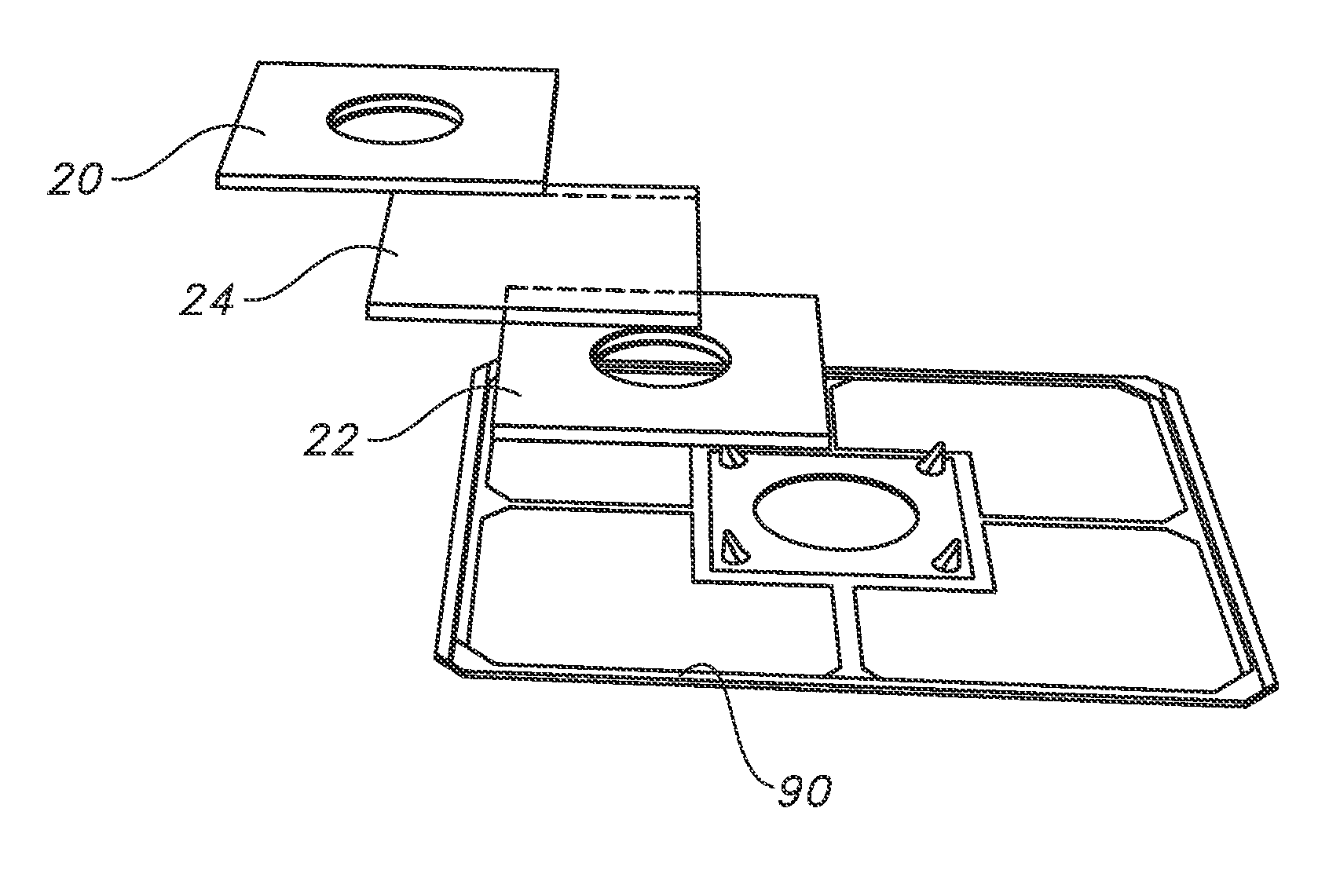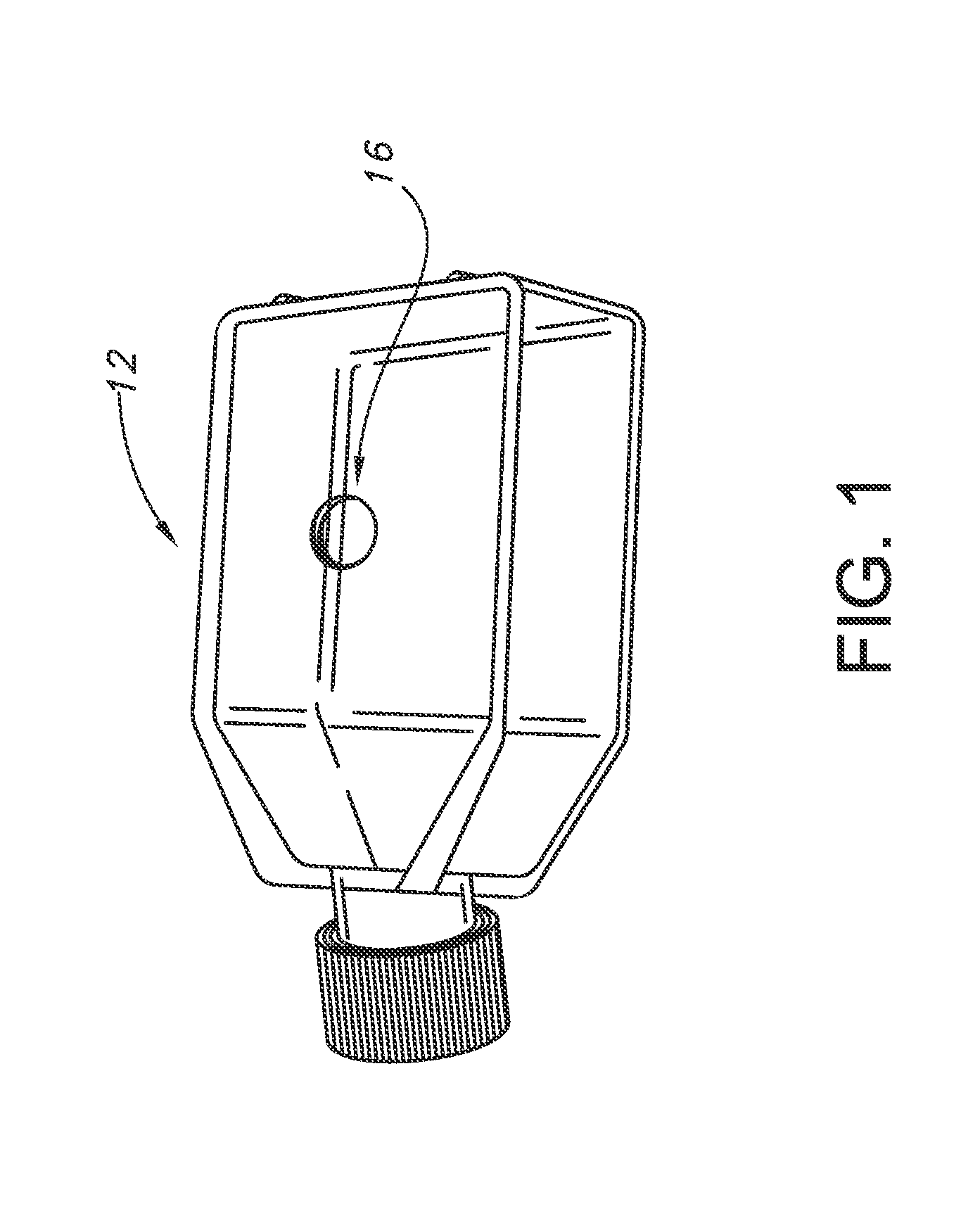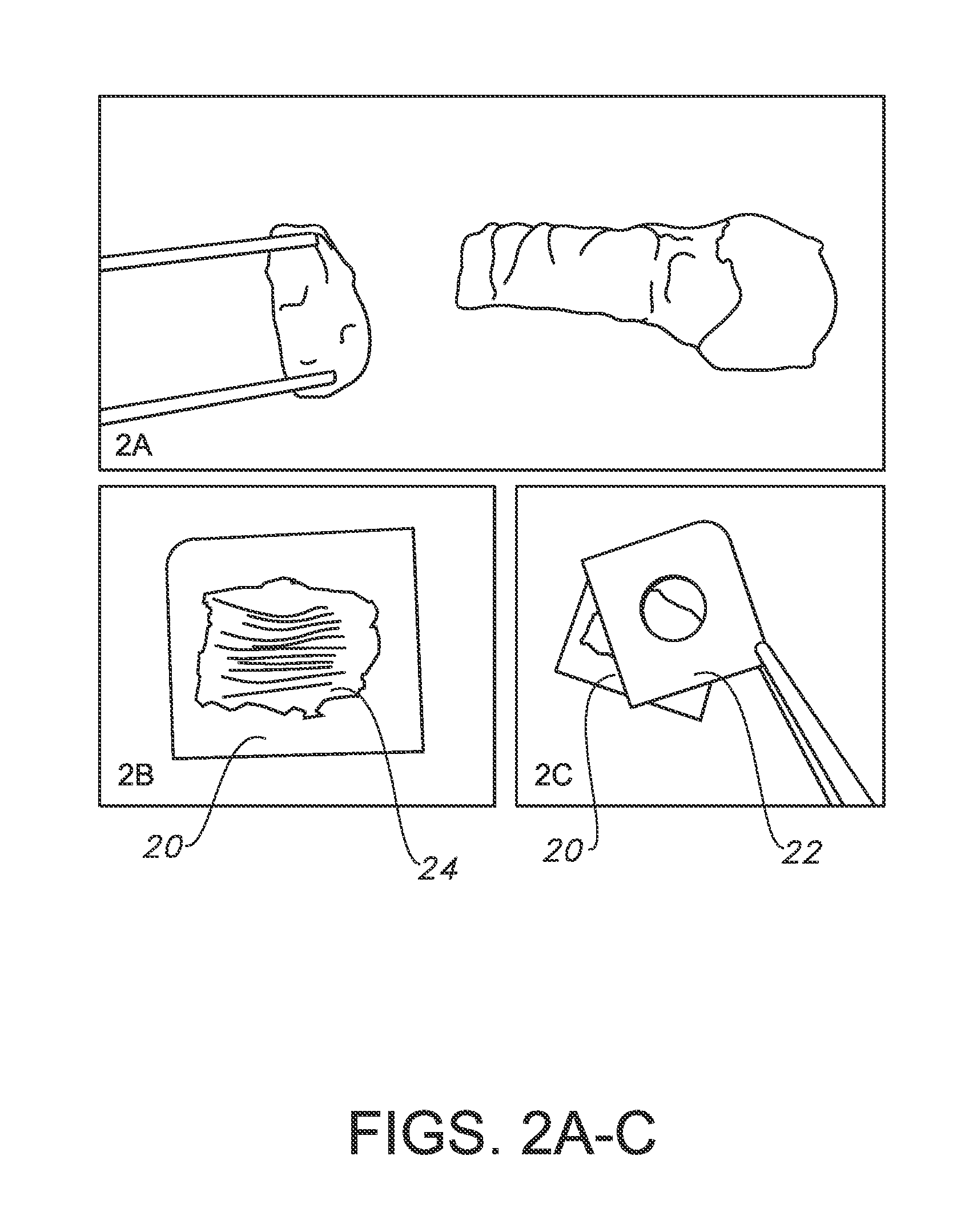Tissue Culture Chip
a technology of tissue culture and chip, applied in the field of tissue culture methods and systems, can solve the problems of limiting the access of the first layer to nutrients and importantly oxygen, and the significant obstacles to overcome in organogenesis, so as to prevent or inhibit the diffusion of water
- Summary
- Abstract
- Description
- Claims
- Application Information
AI Technical Summary
Benefits of technology
Problems solved by technology
Method used
Image
Examples
example
Example 1
Decellularized Tracheal Tissue Presents an Effective Diffusion Barrier
[0068]Diffusion cassettes were constructed from plastic spectrophotometry cuvettes, with a patch of decellularized tracheal tissue interposed between two holes in the sidewall of the cuvettes, Phosphate buffered saline with 70 kDa Dextran labeled with FITC was placed in the left cuvette, and PBS in the right. Imaging was performed after 24 hours at 37° C. Similar experiments were repeated with albumin, and IgG labeled with quantum nanocrystals.
[0069]As shown in FIG. 5, decellularized tracheal patches create an effective diffusion barrier to water, and several biological molecules such as albumin, dextran and IgG.
PUM
| Property | Measurement | Unit |
|---|---|---|
| thick | aaaaa | aaaaa |
| impermeable | aaaaa | aaaaa |
| pressure | aaaaa | aaaaa |
Abstract
Description
Claims
Application Information
 Login to View More
Login to View More - R&D
- Intellectual Property
- Life Sciences
- Materials
- Tech Scout
- Unparalleled Data Quality
- Higher Quality Content
- 60% Fewer Hallucinations
Browse by: Latest US Patents, China's latest patents, Technical Efficacy Thesaurus, Application Domain, Technology Topic, Popular Technical Reports.
© 2025 PatSnap. All rights reserved.Legal|Privacy policy|Modern Slavery Act Transparency Statement|Sitemap|About US| Contact US: help@patsnap.com



